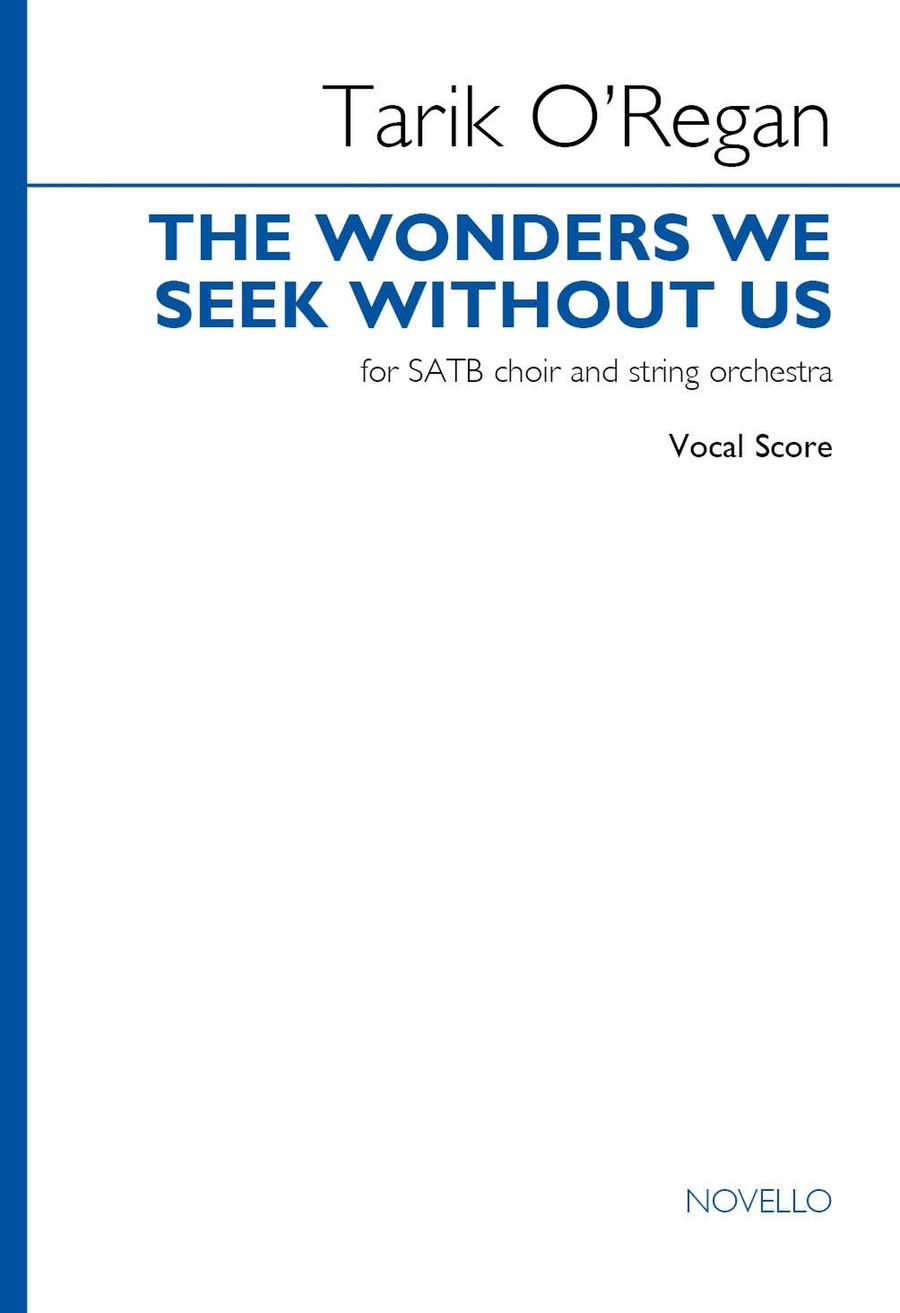 | For SATB Choir and String
Orchestra. Composed by Tarik
O'Regan. Choral. Octavo. 48
pages. Duration 1080 seconds.
Novello & Co Ltd. #NOV297567-
01. Published by Novello & Co
Ltd. Arr : Choral SATBPublisher : Novello & Co Ltd.$7.99 - See more - Buy online
For SATB choir and string orchestra, written in 2024, commissioned by the Master, Fellows and Scholars of Pembroke College, Oxford on the occasion of the College's quadricentennial in 2024. First performed on 29 June 2024, conducted by Mark Wilson. Dedicated to the memory of Dr Guy Newbury (1964-2022). Duration: c. 18 minutes.The Wonders We Seek Without Us examines the spark of inquisitiveness which lies at the root of research and exploration. Thomas Browne (1605-1682), polymath alumnus of Pembroke College, Oxford (commissioner of this work), who gave the undergraduate oration at the incorporation of the College in 1624, speaks of this spark leading to a “pure flame”. When thinking of carrying “the wonders we seek without us,” this flame can be seen to be already present inside ourselves as we search for the extraordinary aspects of life externally. The idea is taken up by Countee Cullen (1903-1946), one of the most important voices of the Harlem Renaissance, and turned inward. He imagines the flame as part of an ember setting alight his own exploration of identity, culture and ancestry, here nuancing Browne's statement that “there is all Africa and her prodigies in us.” Cullen asks, “What is Africa to me?” Virginia Woolf (1882-1941) mediates this imaginary discussion by wondering whether such aspects of thought and existence - “the conceits of life” - are, in fact, dreams. After all, Browne's flame is invisible and Cullen's ember is hidden. In this context, the remarkable language used by the College of Heralds in its 1625 Grant of Arms to Pembroke College has an air of magic realism. Woolf's minimal “flowers and grasses” becomes “a rose gules seeded or barbed vert” and a “thistle proper”. The way an inanimate object - “a college crest” - can only become imbued with movement and momentum by the language with which it is described brings us back to the spark of imagination. It is the inner flames of discovery which illuminate our external quests for understanding. |
|

 (AMERICAN COMPANY)
(AMERICAN COMPANY) 
